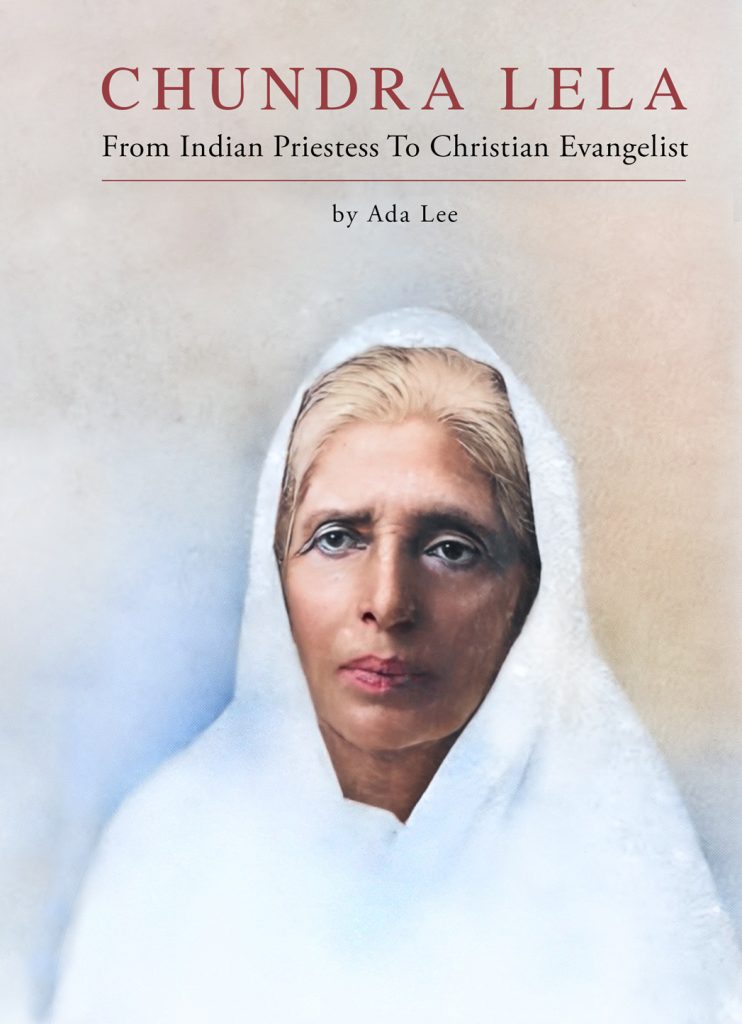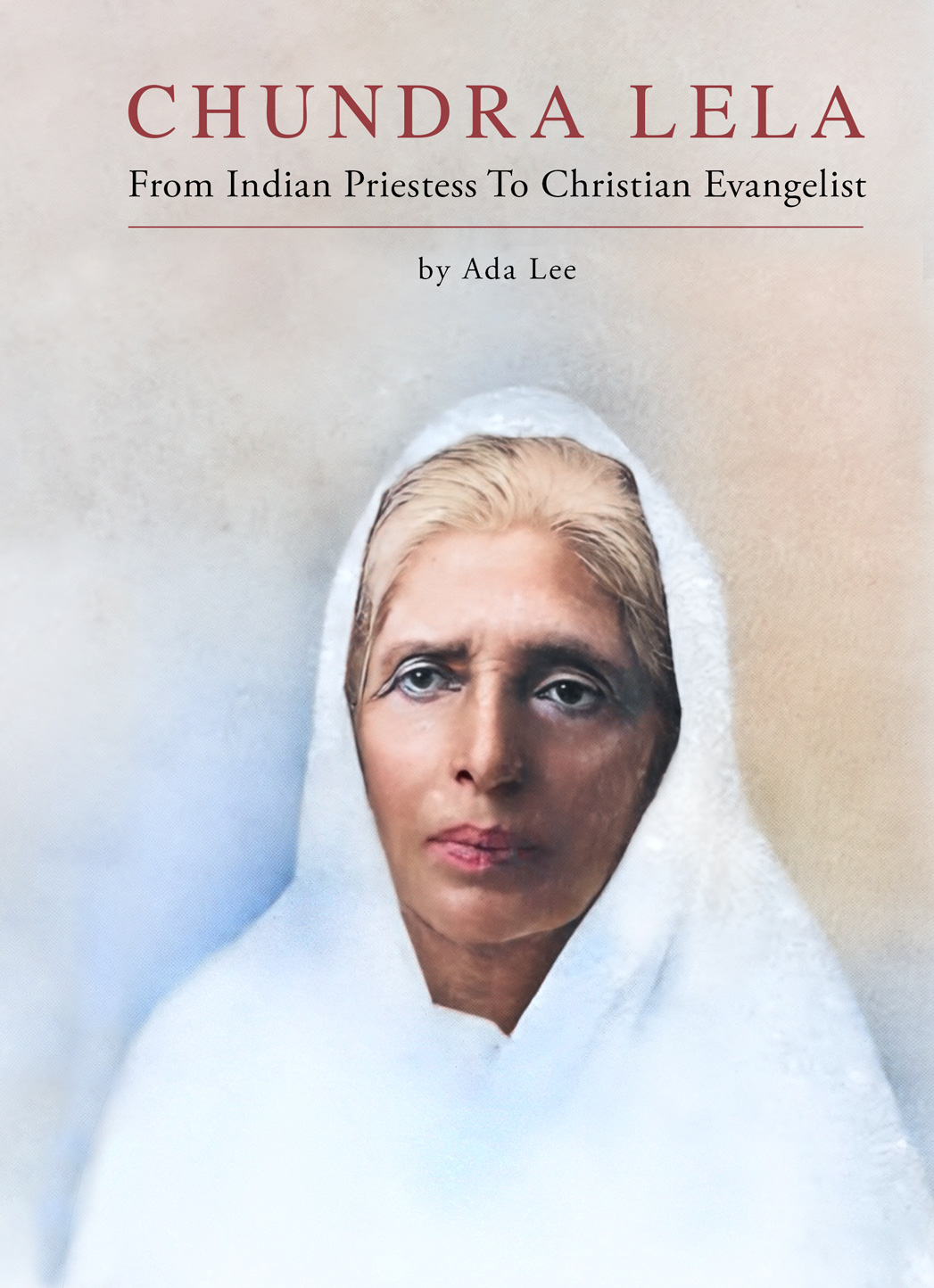
Chundra Lela: From Indian Priestess To Christian Evangelist
- 1 - Chundra’s Birth, Marriage, and Widowhood 6:46
- 2 - The Temple of Jagannath 5:10
- 3 - The Temple of Ramanath 5:19
- 4 - Sorrow and Suffering by The Way 8:01
- 5 - As A Fakir 3:55
- 6 - Awful Deception of Hinduism Disclosed 7:38
- 7 - Breaking Her Fetters 10:22
- 8 - Money-making and Preaching 5:49
- 9 - Baptizing Her Own Brother 6:59
- 10 - Should Women Preach and Evangelize? 5:26
- 11 - A Pilgrimage In Her Old Age 6:49
- 12 - Conversion of a Leper Girl 8:40
- 13 - Sketch of Author's Life - Ada Lee 4:05
Other books about Chundra Lela:
- Chundra Lela: The Story of A Hindu Devotee and Christian Missionary by Rev. Z. F. Griffin, 1911
- A Pilgrim of India, from “Comrades In Service” by Margaret Burton, p25-44.
Also, you can read below a summary from, Walker and Lunt, Talks on Races to Be Won; Wilmot, The Playing of the Moonbeams.
Chundra Lela–A Convert From Hinduism
“You wicked creature! It is because of your sin that this has happened.” These words are roughly spoken to a sobbing nine-year-old girl, as her earrings are torn from her ears, her jewels from her hair, and her bracelets are hammered off her arms. Though she is the daughter of the priest to the Rajah, or King, of Nepal, she is not spared the disgrace and suffering which is the widow’s lot in India.
Two years before, when she was seven, she was married to a boy of nine, but news has just come of his death. Chundra Lela’s outlook now is sad indeed. No one will love her or care for her. Six years pass by and the little widow has read many of the sacred books of the Hindus which tell of great sin as the cause of widowhood. They also say that pardon can be secured if she will go on a pilgrimage to four great temples in the extreme north, south, east, and west of the land — a journey of 3,000 miles. But how can a girl, now fifteen, undertake such a trip? And yet the widow’s curse is resting upon her and this is the only hope of pardon and of peace.
Without saying a word of her intention to her mother or brother or sister, she called two of her servants, maids whom she could trust, and said, “I am going on a long journey to seek pardon for my sins. Will you come with me and share the blessings I hope to win?” They promised to do so, and one night when all was quiet, the three young girls stole forth and began the pilgrimage.
They went first to the temple of Jaganath at Puri on the east coast of India, then south to the temple of Ramanath on an island between India and Ceylon, then to the west to the temple of Krishna at Dwarka. Then they crossed the burning plains of Upper India to the Ganges and climbed the Himalayas to the source of the sacred river and came to the temple of Vishnu at Badrinath. It took seven years to accomplish the pilgrimage to these four great temples, and on the way Chundra Lela bathed in every sacred river, worshiped at every shrine, and brought sacrifices to the idols and gifts to the priests. She had met the requirements for pardon—but still she felt the guilt of sin and was dissatisfied.
Instead of going home she went on more pilgrimages. She became a Sadhu (holy person or fakir), vowing to inflict self-torture for three years. She smeared her body with ashes and during the hot summer she sat out in the scorching sun with five fires blazing around her. From midnight to daybreak she stood on one foot before the idol, praying. When the cooler months of the year came, night after night, at sunset she plunged into a pond and sat there until sunrise with the water up to her neck praying with her beads. She says:
“Nobody knows how long these nights were, nor how I suffered before morning. The string contained 108 beads. With each bead I called on the name of a god,…in the night I would go round the string one thousand times, repeating the names of the gods one hundred and eight thousand times. I would look toward the east for the first ray of light, and wonder if the night would ever end. When day broke, I would crawl out of the water as best I could with my numb limbs, and prostrating my body on the ground, would then measure my length to the spot where I was to sit all day, worshiping idols…Thus I called upon Ram day and night, but received no response. All this I endured just to find God.”
But all this torture brought no peace of mind. Hinduism had failed to satisfy her.
Chundra Lela Hears God’s Word
One day Chundra Lela going into the home of a friend found her reading a strange book.
“What are you reading?” she asked. “A book that the white lady who comes to teach me gave me,” replied her friend. It was a copy of the Bible. Chundra. Lela obtained one for herself, read it, and learned for the first time of a Savior from sin. She eagerly sought instruction from the missionary and soon became a Christian. The zeal and devotion she had spent in idolatry she now transferred to Christianity.
“She at once began to make Christ known, taking the Bible and preaching from house to house, and street to street. She scarcely gave herself time to eat or rest during the daytime. For two years she continued working in this way, and then conceived the plan of going to the place where before she had been a Sadhu, to live among the people and preach Christ where she had before worshiped idols. Then she began a Christian pilgrimage, lasting for several years, going over the old tramping-ground from shrine to shrine, and next she went all through Assam and Sylhet, visiting a queen who had been kind to her when she was a Sadhu. In the palace she read the Bible and preached Jesus.”
“As she was growing old, the missionaries came to her one day and suggested that they build a house for her, where she might spend her last days in quiet and comfort. When they showed her the site outside the city in a restful spot, she protested, ‘If you will build me a house, build it on the roadside, close up, so that when I am too old to walk, I may crawl up to the door and preach to the people as they pass.’”
They did so, and Chundra Lela spoke to the passing crowds as long as she was able, always delighting to bear witness to the Christ, who had redeemed her and who brought peace and joy into her seeking soul.

